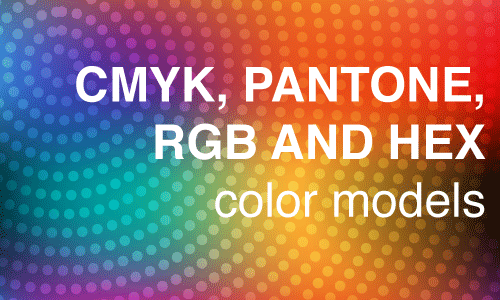 WHAT EVERY MARKETER SHOULD KNOW ABOUT COLOR – WRITTEN BY A MARKETER
WHAT EVERY MARKETER SHOULD KNOW ABOUT COLOR – WRITTEN BY A MARKETER
Confession: Long before I knew better about the printing process and color models, I designed a bright, colorful poster. It was part of a last-minute Christmas present for my niece who was all about hot pink, vibrant purple, and dancing and just had her bedroom redecorated to reflect her energetic style.
I finalized my design and happily moseyed over to my printer to collect the finished product–only to be smacked in the face with this imposter poster. It was my design, yes. But who on earth switched out the colors? Why was it this muddy mauve and overripe purple instead of my electric hues I so carefully selected? Needless to say, the poster never made it to the gift wrapping station.
This naive experience of mine represents a classic case of misunderstanding the printing process. I didn’t realize that what I saw on my screen wouldn’t translate verbatim onto my printed piece.
Colors are represented in different ways depending on the medium through which they are being displayed. Print and onscreen digital mediums each require their own color models to display colors as intended by the producer. If these color models are ignored, your outcome will be as disappointing as my poster mishap.
CMYK and Pantone make the party happen when it comes to print, but there are differences to each method depending on your business needs.
CMYK: DIGITAL AND OFFSET PRINT
This four-color process is applied in printing using a combination of overlapping, tiny dots made up of cyan, magenta, yellow and black. Each color runs separately on the printer. The way the dots are sized and placed for overlap creates a wide spectrum of color.
CMYK colors are defined by the percentage between 0% and 100% of each of the four-colors used to create them. For example, Delzer’s CMYK golden orange is C=0 M=50 Y=100 K=0 (0% cyan, 50% magenta, 100% yellow, and 0% black).
This color model is subtractive, meaning the inks subtract brightness from a white background. The more color you add, the darker it gets.
Tip: For a richly printed black, opt for a CMYK percentage of C=75 M=68 Y=67 K=90.
PANTONE: OFFSET PRINT ONLY
Pantone, or PMS, colors are also known as spot colors. These are developed in one single run instead of multiple runs like CMYK. Each pantone has a unique numbered formula. These colors are specially mixed by an ink or print company as opposed to being built out of the four colors through CMYK.
With 1,755 solid colors in Pantone’s formula guide, PMS colors are the Cadillac method for color matching. Designers and printers alike use these color swatches to ensure the same color outcome. Many companies use assigned pantone swatches for ultimate brand consistency.
ONSCREEN
Whether you’re creating your dream house board on Pinterest or catching up on episodes of Finding Bigfoot, onscreen color models are responsible for the visual depiction.
But brander beware: for these digital colors, different screens produce different results; there’s no way to make every screen perfectly consistent with one another.
RGB: ONSCREEN – SCREENS AND DEVICES
Different intensities of red, green, and blue are combined to produce the final onscreen color. Device screens like your cell phone, tablet, computer monitor or television all output colors from an RGB model.
These colors are additive, meaning the colors you see are created with light. The RGB color model uses values of each color between 0 and 255. The higher the value, the lighter it is, and vice versa. For example, Delzer’s RGB charcoal grey is R=65 G=64 B=66.
Because RGB and CMYK are completely different color spaces, certain RGB shades of color can’t even be achieved with CMYK. Hot pink and vibrant purple, for example…
Hex: ONSCREEN – WEBSITE AND CODING
Hexadecimal colors are made up of a pound symbol (aka #hashtag) followed by a six-digit code made up of numbers and letters.
Web developers primarily use this because this color model can be identified and translated through web browsers.
TAKEAWAY
It’s essential to assign each of your brand colors to CMYK, RGB, Pantone and hex models. This way, your branded colors are properly represented through print and onscreen mediums. A good tool to have on hand is a brand identity document that lists these different color models. This will help you maintain brand consistency when working with different vendors. Take advantage, too, of printing proofs to ensure the color you saw on your screen translates accurately. And don’t try to print neon posters at home–leave that to the professionals. 🙂


